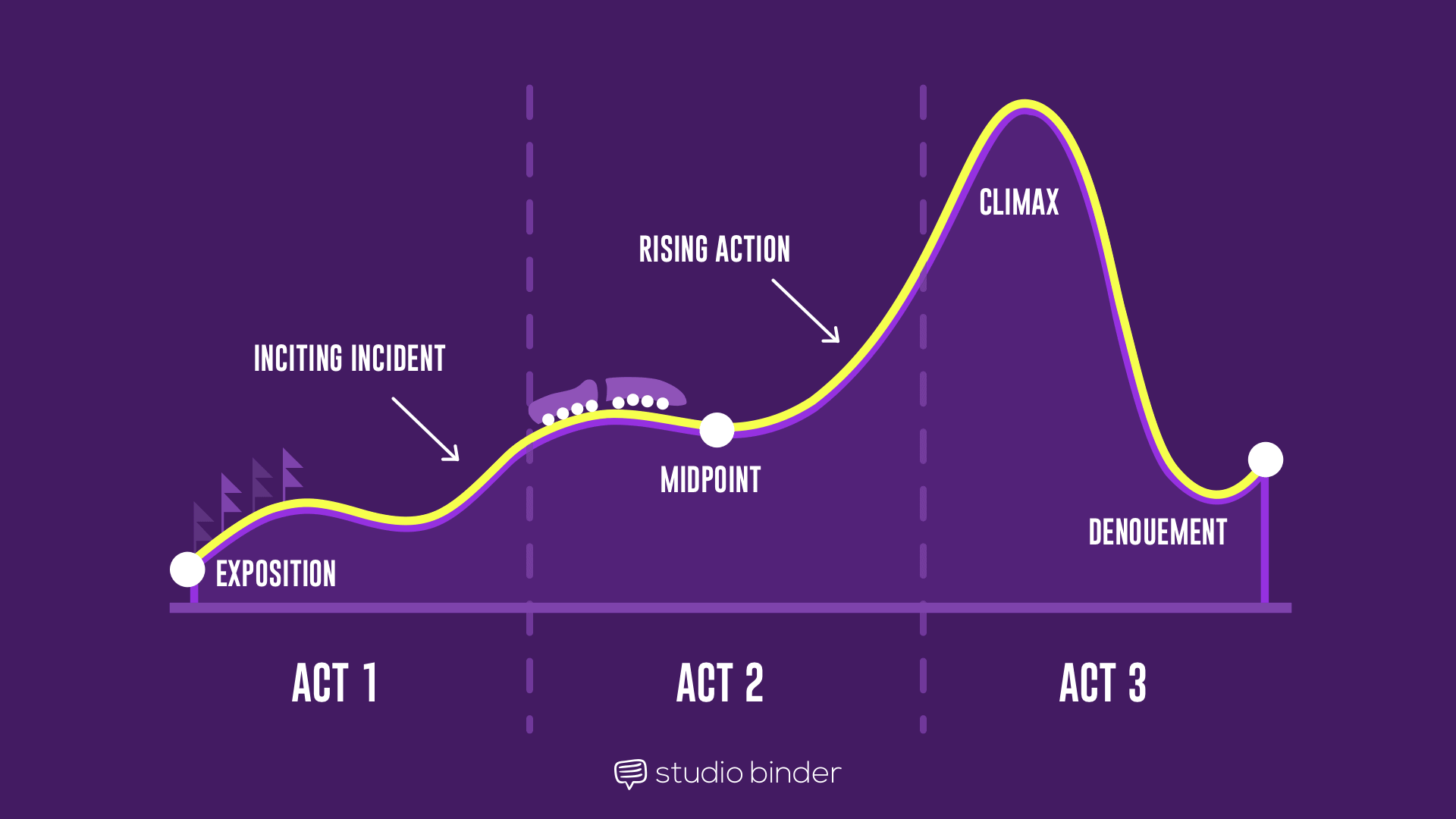Ready to catapult your SaaS to the top of the comparison charts? In today's fiercely competitive landscape, video content is your secret weapon. It's time to move beyond the basic and delve into the strategies that will help you not just survive but thrive.
Get ready to unlock the secrets of attracting top-of-funnel leads, nurturing them with personalized product demonstrations, and converting them into raving customers – all through the magic of video content.

Unearthing Your SaaS's Unique value proposition Through Video Storytelling
Let's face it, the SaaS landscape is crowded. Every day, new software solutions emerge, each vying for the attention of potential customers. In this fiercely competitive environment, video marketing isn't just a ""nice-to-have""—it's a necessity for SaaS companies seeking to differentiate themselves and establish a strong brand presence. However, simply creating any video won't cut it. Your saas video content must be laser-focused on showcasing your unique value proposition – that special something that sets you apart from the competition and makes your product indispensable.
Things to Plan:
- Deep Dive Feature Audit: Analyze every facet of your SaaS product, meticulously identifying functionalities that go beyond the standard offerings. Consider elements like workflow automation, data-driven insights, or custom integrations that can significantly improve user experience.
- Competitor Benchmarking: Conduct thorough research on competitor SaaS products, focusing on their video marketing strategies and highlighted benefits. Pinpoint areas where your SaaS excels and leverage these as your differentiators in your videos.
- Crafting Compelling Narratives: Think beyond simple feature demonstrations. Frame your video content as a series of stories that showcase how your SaaS tackles specific customer pain points, improves productivity, and generates tangible results.

Visually Demonstrating Complex SaaS Features in Easily Digestible Explainer Videos
Your SaaS might offer incredibly powerful and innovative functionalities, but if potential customers struggle to grasp their value, it's like having a treasure chest without a key. Explainer videos play a pivotal role in simplifying complex technical concepts, transforming potentially overwhelming information into accessible and engaging content that fuels conversion.
Things to Plan:
- Storyboarding for Clarity: Develop comprehensive storyboards for each explainer video, meticulously outlining visual sequences and narrative flow. Ensure each frame logically explains a specific feature or concept in a way that resonates with a diverse audience.
- Harnessing Animation and Motion Graphics: Utilize dynamic visuals such as 2D or 3D animation, screen recordings with annotated walkthroughs, and motion graphics to capture viewer attention and vividly illustrate the power of your SaaS features.
- Concise and Engaging Scriptwriting: Craft video scripts that strike a balance between informative and entertaining. Clearly explain complex processes in a jargon-free language, leveraging analogies and metaphors to bridge the gap between technical details and everyday user experience.
Emphasizing the ""Why"" Behind Your SaaS: Crafting Videos That Showcase Your Company's Mission and Vision
In today's conscious consumer landscape, people aren't just looking for a product – they're searching for solutions that align with their values and beliefs. Your SaaS's core features are crucial, but they only tell half the story. To truly differentiate, you must leverage video marketing to convey your company's ""why""—the driving purpose and values that fuel your mission.
Things to Plan:
- Storytelling That Connects Emotionally: Develop video narratives that go beyond simply highlighting features. Share stories about your company's origins, its founding vision, and the challenges it seeks to overcome. Feature passionate employees who are committed to your mission and create an authentic connection with your audience.
- Showcasing Your Impact on Society: Create video content that demonstrates the positive social impact of your SaaS. Highlight case studies, social initiatives, or environmental responsibility practices that exemplify your values and connect with ethically conscious consumers.
- Building Brand Authenticity Through Transparency: Encourage behind-the-scenes videos offering glimpses into your company culture, work processes, and employee engagement. This fosters trust and strengthens your brand narrative through a relatable human perspective.
Profiling Your Ideal Customer for Hyper-Targeted SaaS Video Campaigns
.jpeg)
Think of your buyer persona as the GPS for your SaaS video marketing. Without it, you risk navigating a maze of potential customers with a blindfold on. A well-defined buyer persona serves as the foundation for every strategic video marketing decision, from targeting and messaging to video style and distribution.
Things to Plan:
- In-Depth Customer Research: Leverage a blend of qualitative and quantitative data to understand your target audience. Analyze website analytics, conduct surveys, gather insights from sales calls, and analyze competitor target audiences. The more detailed the data, the sharper your persona will be.
- Creating Persona Narratives: Develop detailed descriptions of your ideal customers that extend beyond demographics and encompass behaviors, pain points, motivations, professional goals, and information sources. Paint a vibrant picture of their workdays, challenges, and decision-making process.
- Visual Representation: Don't underestimate the power of visuals. Create image boards or illustrations that visually depict your personas, their daily work environments, and their desired outcomes. This enhances understanding across your teams and informs your video content creation.
Understanding Your Buyer's Journey to Create Stage-Specific SaaS Video Content
Your prospects' decision-making process isn't a one-size-fits-all journey. Each individual follows a path with distinct stages of awareness, consideration, and decision. Crafting video marketing content that specifically resonates with each of these stages significantly increases your chances of converting leads into customers.
Things to Plan:
- Mapping Your Buyer's Journey: Create a visual representation (e.g., a flowchart or mind map) of your ideal customer's journey through the SaaS sales funnel. Define the different stages, from initial awareness to becoming a loyal customer.
- Creating Stage-Specific Objectives: For each stage, pinpoint the primary objectives you want your video content to achieve (e.g., problem awareness at the top-of-the-funnel, feature demonstrations in the consideration phase, customer testimonials at the decision-making stage).
- Crafting Targeted Video Messages: Tailor your scripts and visuals to speak directly to the needs, challenges, and emotions relevant to each stage. This creates highly personalized and engaging viewing experiences that foster progression through the funnel.
Tailoring Video Messaging and Aesthetics to Specific SaaS Buyer Personas
Just as your messaging must resonate with different stages of the buyer's journey, it needs to speak directly to the language and preferences of each unique buyer persona you have created. Imagine attempting to sell your SaaS product to a tech-savvy programmer with a ""fluff piece"" that lacks depth. You need laser-focused relevance.
Things to Plan:
- Persona-Based Keyword Research: Conduct keyword research specific to each persona, identifying the terms they use to search for solutions like yours. This informs both the script and metadata for optimal search visibility on platforms like YouTube.
- Adapting the Narrative Style: Adjust the tone, complexity, and humor to match each persona's personality and professional identity. For example, your videos targeting C-suite executives might require a formal tone, in-depth case study data, and high-level presentations, whereas those aiming for junior level users could leverage informal, playful narratives.
- Utilizing Relevant Visual Styles and Imagery: Reflect your buyer personas' industry and workplace environment through relatable imagery in your video content. Use visually engaging content formats and styles proven to resonate with that specific group (e.g., dynamic motion graphics for audiences who prefer visually compelling explanations or formal, conversational-style presentations for viewers seeking in-depth discussions).
How to Highlight Unique SaaS Benefits in Short Video Ads

Mastering the Art of the 15-Second SaaS Value Proposition Video:
Time is your enemy (and your friend) when it comes to crafting a highly impactful value proposition video ad. Capturing the viewer's fleeting attention with compelling messaging in 15 seconds or less requires the utmost efficiency and planning. In a sense, it's haiku for SaaS marketers — creating the most impact in the least space.
Things to Plan:
- Focusing on a Single Core Benefit: Avoid information overload. Craft your ad to resonate with one critical problem your SaaS uniquely solves and showcase its associated value proposition.
- Intriguing Visual Hook: Start strong with a visually captivating introduction to instantly grab attention. Use animations, rapid cuts, or an impactful stat on-screen to stop the scroll and increase your video's click-through rate.
- Crystal Clear Benefit Messaging: In mere seconds, explain precisely what problem you solve and why your solution is preferable to alternatives. Focus on quantifiable gains and speak directly to your buyer persona's main pain point.
Leveraging animated explainer Videos to Showcase Complex SaaS Benefits Quickly
Think of animated explainers as micro-movies about your SaaS product, each concisely demonstrating specific aspects of its functionality. Animation not only captures attention far better than static images or slides, but also simplifies seemingly complex operations in a relatable and memorable format.
Things to Plan:
- Identifying the Right Animation Style: There are countless animation types - from 2D cartoons to detailed 3D visualizations. Choose an aesthetic that aligns with your brand identity and the core messages of your SaaS video marketing strategy.
- Storyboarding: Your Key to Success: Before bringing your animations to life, develop detailed storyboards that act as blueprints for each scene, the sequence of events, character movements, on-screen text overlays, and the overarching narrative.
- Pairing Visuals with Effective Voiceovers: Engage experienced voiceover artists to elevate your animated saas videos by conveying warmth, personality, and clear explanations alongside the captivating visuals.
Driving Action Through Compelling Calls-to-Action in Your SaaS Video Ads
It's great if your video ads showcase your unique features and differentiate your SaaS product effectively, but a strong ending is what separates ""viewership"" from ""customer engagement"". That final nudge towards action can mean the difference between a website visitor and a converted lead.
Things to Plan:
- Alignment with Buyer Journey Stage: The appropriate call to action varies greatly based on where your viewer is in the customer funnel. Someone completely new to your SaaS might be best suited for a ""learn more"" CTA leading to an in-depth landing page, while someone further down the funnel might be primed for a ""book a demo"" or ""start your free trial"".
- Creating Urgency Without Hype: Encourage immediate action by introducing limited-time offers, exclusive deals, or bonus content available only for a short window. The urgency factor can significantly improve conversion rates while avoiding misleading tactics.
- Providing Clarity in Your CTA: Your call to action should be both specific and concise. Leave no doubt in the viewer's mind about the intended next step and what benefits they'll derive from clicking the link, visiting a page, or leaving contact details.
Comparison Videos Outlining Your SaaS Advantages Over Alternatives
Directly Addressing Competitor Weaknesses While Highlighting Your SaaS Strengths
When your potential customer is evaluating numerous similar solutions, they inherently seek information to justify one choice over the other. This ""need to justify"" is the engine behind the power of comparison videos. Well-structured and well-researched comparisons offer an unparalleled opportunity to demonstrably prove your worth against the market.
Things to Plan:
- Choose Your Competitor Battles Wisely: Avoid comparisons that would paint your brand negatively, like attempting to dominate a heavyweight contender when you're a newcomer. Focus on competitors you genuinely outperform, ensuring an easy win with demonstrable differences.
- Feature-to-Feature Breakdown: Create visually appealing comparison charts or segments highlighting core aspects like features, price plans, ease of use, and integrations. In-depth explanation coupled with visuals drives information retention effectively.
- Emphasize Value & Efficiency: Showcase the way your SaaS delivers superior value by highlighting either significant cost savings or dramatic improvements in speed, quality, or effectiveness for similar features offered by your competitor.
Focusing on Tangible Outcomes and ROI When Comparing Your SaaS to Others
In the business world, abstract claims of quality matter far less than hard data. When planning comparison video content, be the champion of facts, figures, and measurable success for your viewers. Demonstrating superior return on investment (ROI) with real-world numbers offers far more power than subjective declarations.
Things to Plan:
- Gather Testimonials Focused on ROI: Interview or collect testimonials specifically from clients who can quantifiably express how much they saved, increased revenue, sped up processes, or gained productivity through your product in contrast to your competitors.
- Harness Case Study Data: If full-blown case studies exist, identify specific metrics that demonstrably showcase the improvements your SaaS offered in comparison to alternative solutions used by previous clients or those offered by your competitors.
- Quantify Every Improvement You Mention: Every ""we do it faster"", or ""it's easier to manage"" statement should be backed up with quantifiable figures. Use hard numbers to provide a context of how much faster or how much simpler something becomes with your solution.
Avoiding Negative or Disparaging Remarks about Competitors in SaaS Comparison Videos
As tempting as it can be to bash competitors when outlining your superiority, taking the ""high road"" yields greater brand perception and respect from your target audience. Instead of engaging in direct attacks, subtly contrast your SaaS advantages in an elegant, positive manner.
Things to Plan:
- Highlight Benefits & Let Customers Infer the Shortcomings: Clearly show how your product fulfills the requirements lacking in alternatives without naming any specific shortcomings in direct comparison with others. Your audience can often arrive at their own conclusions through careful observation.
- Never Resort to Factual Inaccuracy or Hyperbole: Integrity builds brand trust. Even when highlighting flaws of alternative solutions, ensure you remain factually accurate and objective, always verifying claims and steering clear of exaggerated portrayals.
- Emphasize Your Focus is on Customer Solutions: Repeatedly emphasize that your focus remains squarely on meeting customer needs and achieving specific business outcomes, regardless of the weaknesses of others.
SaaS Customer Testimonial Videos Overcoming Purchase Objections

Featuring Real SaaS Customers Sharing Their Success Stories and Overcoming Challenges
In today's internet landscape, customers treat generic marketing claims with healthy skepticism. As such, testimonial video marketing offers an unparalleled channel to leverage social proof and demonstrate the tangible benefits of your SaaS product. Authenticity builds trust in a way that self-promotion simply cannot replicate.
Things to Plan:
- Pre-Interview Questionnaires: To elicit insightful and well-structured testimonial videos, provide potential interviewees with thought-provoking questionnaires that probe their specific use cases, initial challenges, achievements through using your product, and specific elements they find valuable.
- Capturing Natural Customer Emotion: Encourage interview subjects to speak candidly and authentically. Natural pauses, smiles, and occasional self-deprecating humor all humanize your testimonial video content, forging a connection far greater than staged presentations.
- Varied Customer Demographics: Showcase testimonials from a diverse range of customer types (industry, company size, individual roles) to showcase that your solution works for various use cases and businesses in their respective buyer's journey stage.
Addressing Common SaaS Purchase Objections Head-on in Testimonial Videos
Customers facing any sizable purchase decision tend to express anxieties and reservations that must be tactfully overcome. Testimonial video content can directly confront those objections using the power of customer-to-customer empathy. This approach instills confidence and eases anxieties surrounding their own future decisions.
Things to Plan:
- Compiling Frequently Heard Concerns: Talk to your sales team and customer support staff. Identify recurring objections that customers frequently raise (e.g., cost-effectiveness compared to competitors, concerns over ease of integration, worry about switching providers).
- Curating Testimonial Matches: Strategically choose testimonial subjects that have either successfully faced these common doubts in their own path to choosing your SaaS product, or whose background provides valuable perspective to debunk certain objections.
- Asking Guided Questions: While leaving testimonials mostly authentic, prompt interview subjects with questions explicitly addressing each common concern. This steers the narrative organically towards easing concerns shared by prospects watching the video.
Showcasing the Diversity of Your SaaS Customer Base Through Targeted Testimonial Videos
One-size-fits-all marketing belongs in the history books. Your target audience is multi-faceted, composed of individuals in varying roles and industries with a range of individual challenges. Targeted testimonials are the ""specialization"" within your video marketing, enabling relevance for everyone you hope to engage.
Things to Plan:
- Create Audience Segmentation: Develop segments based on ideal client profiles that you want to represent visually in your video testimonials. It can be based on industry, company size, geographic location, software experience level, or roles like IT professionals vs. C-Suite executives.
- Recruitment Targeted towards Gaps: If a significant client segment lacks representation in your current library, it signals who to approach for your next testimonial subject. Diverse video offerings build universal appeal.
- Micro-Niche Content Distribution: Don't simply release testimonials in a generic fashion. Leverage social media groups, targeted LinkedIn Ads, or even website pages dedicated to specific segments. Deliver relevant content directly to each audience through effective product positioning tactics.
Scriptwriting Best Practices for SaaS Comparison Video Ads
![]()
Crafting a Compelling Narrative That Clearly Differentiates Your SaaS
While data and objectivity matter, don't forget the inherent power of a good story to captivate hearts and minds. The purpose of a comparison video ad script goes far beyond simply listing facts – it weaves together your value proposition, unique selling points, and benefits into a persuasive storyline that compels action.
Things to Plan:
- Understanding Your Story Arc: Start by defining the core message that needs to be communicated (your differentiation point). Identify the narrative flow (e.g., problem-solution-proof-call-to-action) before you dive into the specifics.
- Engaging Your Viewer Early On: Immediately hook viewers with a relatable question or problem they face. Establish early why they should even consider an alternative to the product they currently use or competitor solutions being evaluated.
- Transitioning from Features to Benefits: For every feature you compare with your competitor, immediately express the practical benefit to the user. How does that aspect of your SaaS product directly impact their day-to-day workflow, effectiveness, or cost efficiency?
Focusing on Benefits, Not Features, in Your SaaS Comparison Video Scripts
Features can be boring to most audiences, benefits are what stir the soul and compel a user to actively evaluate your product. While features tell people what you do, benefits paint a vivid picture of how these capabilities impact the daily workflow or the success of your viewer.
Things to Plan:
- Identify User Pain Points Solved: Don't start by simply listing the cool functionalities your SaaS boasts. Define the critical pain points that plague the user or industry you target and then showcase which features solve these pains.
- Answer the ""So What?"": Assume an average person might hear ""cloud-based syncing"". They might ask ""so what does that DO for me?"". Your script should immediately follow such features with benefits - ""this ensures you have access to your data ANYWHERE, on any device"".
- Showcase Tangible Gains: Benefits should be palpable whenever possible. For example, instead of ""robust collaboration tools"", your video marketing script might state: ""improve team communication efficiency by 25% through streamlined internal messaging features"".
Using Strong Call-to-Actions to drive conversions from Your Comparison Videos
Having watched the entire comparison, it's not enough to leave the viewer thinking you're a ""good option"". Your comparison video content should build to a point where action is not just encouraged but seems a natural, next step. Effective calls-to-action (CTAs) make that critical jump from consideration to active evaluation a smooth one.
Things to Plan:
- Placement Based on Script Flow: You can create a strong call to action near the mid-point of a comparison (if the benefits are compelling enough at that stage), but always include it at the end of the video with maximum emphasis. The final nudge drives viewers while your benefits are freshest in their minds.
- Clarity Over Creativity: While ""try it now for FREE"" offers appeal, sometimes a simple and clear ""request a personalized demo today"" provides a better conversion for specific B2B products. Choose relevance over gimmicks.
- Provide Incentive & Urgency (Where Applicable): You could consider ending with a time-limited special offer, free resource for first-time demos, or highlighting bonus content gained if the action is taken immediately for a stronger nudge towards your conversion goal.
Optimizing SaaS Comparison Video Titles and Descriptions for YouTube Search
If a tree falls in the forest and nobody hears it... In the same vein, your brilliantly crafted comparison videos won't gain the traction they deserve if hidden within YouTube's vast depths. Consider it ""SEO for video marketing"". You must get noticed amidst the sea of options available on the platform, using every tool to improve discoverability.
Things to Plan:
- Comprehensive Keyword Research: Use tools like Google Keyword Planner to find relevant terms that users might input when seeking alternative solutions to existing products or competitors' offerings. Include a range of keywords in both your video titles and description sections.
- Natural Language in Titles: Instead of using keyword strings like ""Best Project Management Software [Your Name] vs. Asana"", consider something like ""Tired of Asana? [Your Name] Offers Powerful Alternative"". Human language with ""emotional appeal"" gains clicks more often.
- Description Rich in Detail: Beyond keywords, provide value in your description that helps viewers determine relevance without even needing to click. Offer key functionalities that make you a good product alternative, list unique selling propositions compared to a specific competitor, etc.
Building a YouTube Channel Dedicated to SaaS Comparisons and Product Demonstrations
YouTube success doesn't just rely on single videos, it builds a repository of your knowledge and value-add for viewers to browse, leading them further down your conversion funnel. With time, building a dedicated YouTube channel that's optimized for searchability can become a significant source of qualified leads at various stages of the buyer's journey.
Things to Plan:
- Keyword-Rich Playlists: When creating multiple comparison or demo video content pieces, group them into playlists organized using searchable key phrases. For instance, create one with the theme of ""[Your Name] vs Competitor A"" where users discover all relevant pieces quickly.
- Comprehensive ""About"" Section: Introduce yourself and your SaaS product fully in your channel's description section, including a call to action for visiting your site, booking demos, or reading deeper resources that exist elsewhere.
- Schedule Regular Upload Cadence: Consistency attracts both viewers and the YouTube search algorithm. A schedule helps establish an expectation for your subscribers, leading them back over time.
Retargeting Website Visitors with Personalized SaaS product demo Videos

Creating Tailored SaaS Demo Videos Based on Website User Behavior
Website analytics is like the x-ray vision of marketing, enabling a granular view into what truly interests your product's visitors. Retargeting based on behavioral signals is one of the most effective tools for nurturing warmer leads within your conversion funnel through personalization at scale.
Things to Plan:
- Segment Your Website: Using tracking and website tools, divide website content into clusters or tags associated with certain functionalities or themes of your SaaS product. For instance, some pages might deal with customer relationship management (CRM), others focus on sales team features, etc.
- Triggered Demo Content: Depending on which pages users interacted with, ensure pre-made personalized demo video content automatically triggers as retargeting ads or website overlays on subsequent sessions or views. Someone browsing ""CRM features"" shouldn't be re-targeted with videos explaining email automation.
- Personalization Tokens in Video Players: Modern video players like Wistia or Vimeo offer deep integrations for personalizing video thumbnails or on-screen text overlays dynamically depending on who's watching. The more it feels made specifically for that viewer, the higher the engagement tends to be.
Utilizing Retargeting Ads to Deliver Relevant SaaS Demo Videos on Social Media and Other Platforms:
SaaS marketing effectiveness significantly improves by realizing the average lead might take weeks or even months to traverse your customer journey. It's not a single click that counts, but a series of meaningful, well-timed nudges that educate and drive them towards conversion. This is where video ads in retargeting campaigns shine brightly.
Things to Plan:
- Pixeling and Targeting for Each Platform: Be it LinkedIn, Facebook, YouTube, or other channels frequented by your buyer personas, ensure they are ""pixeled"" (tagged for future ad targeting). Once a website visitor hits a key page like pricing or a features page, the retargeting pixel notifies platforms that they've exhibited strong purchase intent.
- Creative Variances per Platform: An ad that shines on LinkedIn might not be a perfect fit on Facebook. Visual language varies for different platforms. Be willing to invest in making slight adjustments for thumbnail, text overlays, and even introductory scenes of your video to match user expectation in each medium.
- Targeting Sequencing (For Long Decision Cycles): Instead of hammering retargeted viewers with the same video 7 days straight, be more strategic. Deliver multiple touches spread over time - the first demo showcasing general benefits, followed by videos showcasing functionalities they read up about on your site, testimonials of similar clients they now resemble, etc.
Measuring the Effectiveness of Retargeting Campaigns with Personalized SaaS Videos
It's all too easy to make generalized statements like ""we use video in retargeting"". The power of SaaS video marketing, when well-structured, lies in how thoroughly its effects can be quantified and improved over time through the right measurement methodology.
Things to Plan:
- Tracking View-Through vs. Click-Through: While conversion (e.g., free trial start) remains the end goal, track the number of people viewing 75% of a retargeted video. Those who didn't click might still be influenced by the messaging and need a different kind of nudge down the road.
- Comparing Segmented Retargeting Data: If you've got users pixelated for various features pages they explored, create video demos dedicated to those themes or functions and target them accordingly. Track which video retargeting efforts result in better click-through rates and/or conversions for each thematic cluster on your site.
- Integrating with CRM: Ensure that form submissions, lead capture systems, and demo booking mechanisms capture data about which retargeting campaign generated that interaction. If the user clicked on a demo offer after watching 3 videos on CRM functionalities, ensure your CRM reflects that, informing the sales approach that now follows.
Creating Educational SaaS Video Content Addressing Key Industry Challenges
In a market where customers actively self-educate online, offering genuinely valuable insight strengthens your authority and trustworthiness beyond typical marketing speak. This positions your SaaS product as not just another tool, but as a trusted resource linked to knowledgeable professionals, enhancing credibility, brand awareness, and recall down the road during a product comparison.
Things to Plan:
- Trend & Problem-Focused Keyword Research: You're not necessarily selling your features here, but establishing expertise. Find what users in your niche struggle with on platforms like Quora, Reddit, or forums specific to your industry. Create video titles and content that addresses those directly, offering insight and thought leadership, not just marketing jargon.
- Creating Evergreen Content Pillars: Focus some video series on ""foundational knowledge"" topics relevant to your industry but not quickly changing. This means a user searching today as well as someone doing it 18 months from now finds that video useful, building lasting visibility.
- Short Bites vs. Long Deep Dives: Mix your content strategy between short, attention-grabbing explainers or ""tips & tricks"" and lengthier, in-depth presentations with webinar-like feels, for audiences at varying stages of engagement with your niche topics.
Hosting Live Q&A Sessions and Webinars Featuring SaaS Industry Experts

There's a magic to real-time interactions that recorded videos cannot fully replace. They offer unparalleled chances to personalize saas marketing in a public way. Webinars with expert speakers (whether external or your own internal champions) allow you to showcase both the technical capabilities of your product and demonstrate depth of knowledge, building trust and loyalty.
Things to Plan:
- Promoting Your Events Extensively: Utilize social media, your website, even targeted email campaigns to attract attendees for your events well in advance. Generate pre-webinar hype with short video teaser snippets revealing key topic areas or questions that will be addressed.
- Structured Q&A with Moderation: Instead of a free-for-all, consider collecting attendee questions before the webinar, prioritizing them based on popularity, relevance, and product differentiation opportunities the answers provide. Moderators steer the discussion, ensuring valuable insights are shared without going off-track.
- Visuals During Presentation Segments: Break down monotonous presentation elements by incorporating screen shares showing product functionality relevant to the discussion points. Well-timed product demonstrations alongside theory solidify your expertise.
Developing a Consistent Video Content Calendar to Maintain Thought Leadership Momentum

Creating sporadic videos, without a predictable plan, will make building a consistent audience on platforms like YouTube difficult. People and algorithms alike respond favorably to structure. You are no longer just ""that company who sometimes makes videos"", but an actual media source for your industry, improving overall brand visibility and influencing the future stages of your viewer's buyer journey.
Things to Plan:
- Match Release Schedule to User Behavior: For B2B SaaS audiences, weekdays often generate higher views, particularly at lunch breaks. This may be less so on social platforms frequented on weekends. Align release timings with the platform and ideal user behavior as it pertains to your ideal persona.
- Topical Content Categories: Consider a recurring schedule featuring themes relevant to your niche (e.g., security best practices on Fridays, industry trend reviews every Wednesday, etc.). Variety attracts wider segments, as not everyone has the same exact pain points they're searching for help with.
- Promote Your Content Calendar Externally: When your content schedule is well-established, consider publishing or highlighting upcoming topic dates in places other than just your YouTube channel description. This can include website
Leveraging Video Webinars to Nurture Leads and Educate Them on SaaS Features
Structuring SaaS Webinars to Deliver Value and Drive Engagement
Webinars offer a powerful platform to deeply engage potential customers, fostering a stronger understanding of your SaaS product and its benefits. By providing valuable information and insights, you can position your SaaS as a solution to their pain points.
Things to Plan:
- Identify Key Challenges Your SaaS Addresses: Define the common challenges your target audience faces and how your SaaS provides specific solutions. Consider keywords like ""video marketing saas challenges"" and ""product comparison video benefits"".
- Craft a Compelling Webinar Title and Description: Draw attendees in with a clear, concise, and benefit-driven title and description. Think about terms like ""saas webinar best practices"" and ""effective video content strategy"".
- Develop a Detailed Webinar Agenda: Outline the key topics you'll cover, ensuring they align with audience interests and provide valuable takeaways. Consider search phrases like ""differentiation through video content"" and ""SaaS video marketing strategies"".
Promoting Your SaaS Webinars Through Targeted Email Marketing and Social Media Campaigns
Attracting a strong audience for your SaaS webinar requires a targeted and strategic promotional effort. Using email and social media, you can effectively reach potential attendees and spark their interest in your webinar's content.
Things to Plan:
- Segment Your Email List: Divide your subscribers into groups based on their interests and engagement levels, enabling you to tailor promotional messaging. Consider using tools to ""video track saas conversions"" and ""optimize video ad campaigns"".
- Craft Compelling Email Subject Lines and Content: Use powerful subject lines that grab attention and pique recipients' curiosity, while clearly highlighting the webinar's benefits. Research phrases like ""targeted video ads for SaaS"" and ""video marketing for saas growth"".
- Leverage Social Media Platforms: Utilize relevant platforms like LinkedIn, Twitter, and Facebook to create engaging posts that showcase your webinar's value proposition. Think about the importance of ""SaaS video ROI measurement"".
Repurposing SaaS Webinar Content into Shorter Videos for Social Media and Other Channels
Extending the lifespan of your webinar content involves creatively repurposing it into engaging video snippets ideal for sharing across various channels. This maximizes your return on investment and broadens your content's reach.
Things to Plan:
- Identify Key Takeaways: Highlight the most impactful moments, insights, and demonstrations from your webinar to extract into shorter, stand-alone videos. Understand how ""saas product demos drive sales"".
- Create Different Video Formats: Tailor the format of your repurposed videos based on each platform's strengths and viewer preferences. Consider formats like ""saas customer testimonial videos"" and ""explainer videos for SaaS features"".
- Add Eye-Catching Visuals: Enhance your repurposed videos with engaging visuals, captions, and background music to improve their impact and watchability. Explore the use of ""animated explainer videos for saas"" and ""product demo video editing"".
Tracking Key Metrics to Analyze the Effectiveness of SaaS Video Campaigns
Understanding the impact of your SaaS video marketing requires meticulous tracking and analysis of key metrics. These metrics provide insights into campaign effectiveness, allowing you to identify areas for optimization and resource allocation.
For SaaS businesses striving to make every marketing dollar count, understanding the return on investment (ROI) of your video efforts is paramount. By measuring the impact of video on customer acquisition cost (CAC), you can make data-driven decisions about future investments in your SaaS video marketing strategy.
Deep Dive:
- Website Traffic: Measure how video content drives visitors to your website through metrics like referral sources, landing page visits, and unique page views. Use analytics to ""track saas video engagement metrics"" and ""measure video ad conversions"".
- Lead Generation: Track the number of new leads generated from video content through forms, calls-to-action, or landing page conversions. Leverage tools for ""video lead capture for saas"".
- Conversion Rates: Analyze the percentage of leads who progress through different stages of your sales funnel after watching your video content. Explore methods for ""a/b testing saas video ads"" and ""optimizing saas video landing pages"".
A/B Testing Different SaaS Video Ad Formats and Messaging to Optimize Results
)
Optimizing your SaaS video marketing for peak performance requires constant experimentation and a data-driven approach. A/B testing empowers you to compare the effectiveness of different video elements, helping you refine your strategy over time.
In the dynamic landscape of SaaS marketing, staying ahead necessitates continuous refinement and adaptation. A/B testing enables you to meticulously evaluate the effectiveness of your video ads, leading to a sharper focus on impactful elements and stronger resonance with your audience.
Deep Dive:
- Video Format: Experiment with various formats like explainer videos, product demos, customer testimonials, and animated content to see which resonate best with your target audience. This can include ""saas comparison video formats"" and ""testimonial video best practices"".
- Video Length: Test videos of different lengths to identify the optimal duration for viewer engagement and information retention. Consider factors like ""attention span for saas videos"" and ""video length impact on conversions"".
- Call-to-Action (CTA): Explore different CTAs, including text overlays, end screens, and voiceovers, to drive desired actions like website visits, free trial signups, or demo requests. Design effective ""saas video call to action strategies"".
Calculating the Return on Investment (ROI) of Your SaaS Video Marketing Initiatives
Justifying the investment in your SaaS video marketing efforts requires clear and compelling ROI analysis. Understanding the relationship between spending and revenue generation through video content is essential for making informed strategic decisions.
In the boardroom, justifying marketing expenditures hinges on demonstrable return on investment. Effectively showcasing the ROI of your SaaS video marketing initiatives clarifies its impact on your bottom line and paves the way for future investment and expansion.
Deep Dive:
- Define Your ROI Goals: Establish specific objectives for your video marketing efforts, whether it's increased lead generation, higher conversion rates, or improved brand awareness. Focus on ""measuring the success of SaaS video content"".
- Track Costs: Thoroughly account for all video marketing expenses, including production costs, platform fees, advertising budget, and team salaries. Calculate ""saas video production cost vs. return"".
- Monitor Revenue Generation: Measure the revenue directly attributable to your video marketing initiatives through attribution models and conversion tracking. Analyze ""revenue attribution for saas video marketing"".
Highlighting Key Performance Indicators (KPIs) and Productivity Gains in SaaS Demo Videos
Clearly articulating your SaaS's value proposition during demonstrations involves explicitly showcasing its positive impact on vital KPIs and productivity metrics. By emphasizing tangible improvements, you bolster your product's desirability and effectiveness in the eyes of potential customers.
Things to Plan:
- Identify the Most Relevant KPIs: Focus on KPIs that directly address your target audience's pain points and showcase how your SaaS delivers improvements in these areas. Explore industry-specific ""saas kpis to highlight in video demos"".
- Incorporate Real-Time Demonstrations: Use screen recordings and walkthroughs to visualize how your SaaS drives positive changes in productivity and efficiency. Demonstrate the ""ease of use of your saas product in videos"".
- Quantify Improvements with Data: Use concrete numbers and figures to highlight productivity gains, cost savings, and time reductions achieved through your SaaS. Emphasize ""data-driven insights in saas video marketing"".
Using On-Screen Text and Graphics to Emphasize Important Statistics and Success Metrics
Boosting the impact of key statistics and success metrics involves strategic use of on-screen text and graphics. These visual elements highlight essential figures, leaving a lasting impression on viewers and reinforcing the value proposition of your SaaS product.
Things to Plan:
- Select the Most impactful Metrics: Identify the statistics that carry the most weight in communicating your SaaS's success, such as customer growth, ROI figures, and efficiency improvements. Explore the concept of ""data storytelling in saas video content"".
- Design Engaging Visuals: Create visually appealing graphics, charts, and icons that enhance the viewer experience and complement the narrative of your video. Leverage tools for ""creating data visualizations for saas videos"".
- Choose appropriate Font Sizes and Styles: Ensure your on-screen text is easily legible and fits aesthetically with your brand and overall video design. Focus on ""video text readability and aesthetics""
Conclusion:
As we reach the conclusion of this exploration, it's clear that SaaS video marketing isn't just a trend, it's a foundational element of sustained success in today's digital marketplace. By leveraging the insights we've uncovered, you're equipped to approach video content creation with a new level of strategy and purpose.
Remember, building a compelling brand narrative through video goes far beyond simply showcasing features. You must connect with your target audience on an emotional level, demonstrating empathy and highlighting how your SaaS directly addresses their unique pain points.
Measurable success relies on establishing key performance indicators (KPIs) for every campaign, using analytics to gauge ROI, and optimizing future content based on that data. Whether it's retargeting ads based on user behavior or driving action through personalized product demo videos, every touchpoint is an opportunity for greater effectiveness.
Think of your video content strategy as a journey, not a destination. Embrace ongoing optimization, gather customer testimonials as your success stories grow, and refine your video messaging as you better understand your target personas' needs.
In a world where competition for customer attention is fierce, don't underestimate the power of human connection that a well-crafted video can bring to your SaaS product offering. Video transcends language and appeals directly to emotion – the very core of how we, as consumers, justify decisions in our rapidly changing landscape.
Invest the time and effort into the principles outlined within this guide and watch as your video marketing efforts translate into real-world returns for your SaaS, and real-world benefits for your clients who come to understand the genuine value you offer through a powerful medium.










